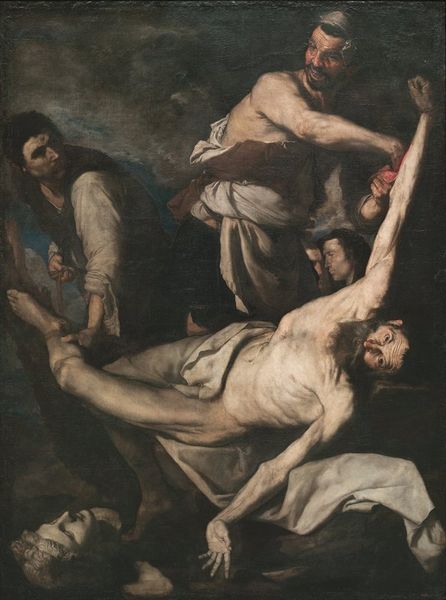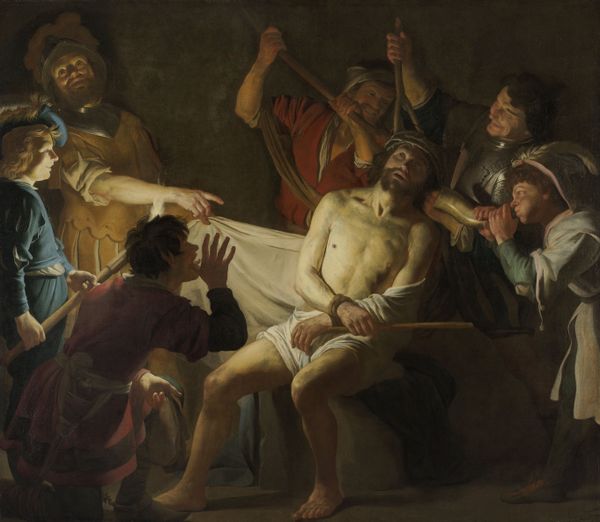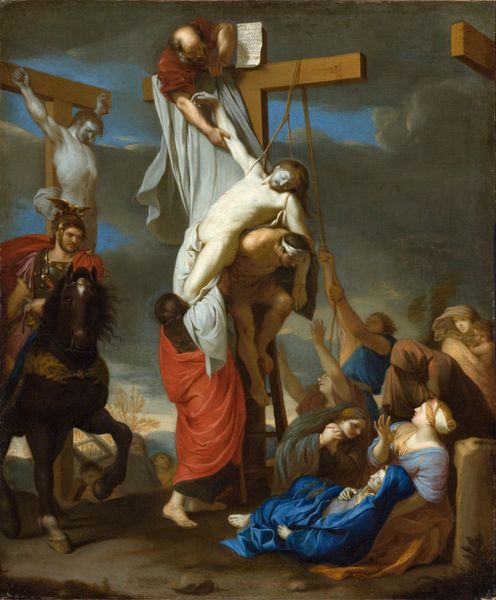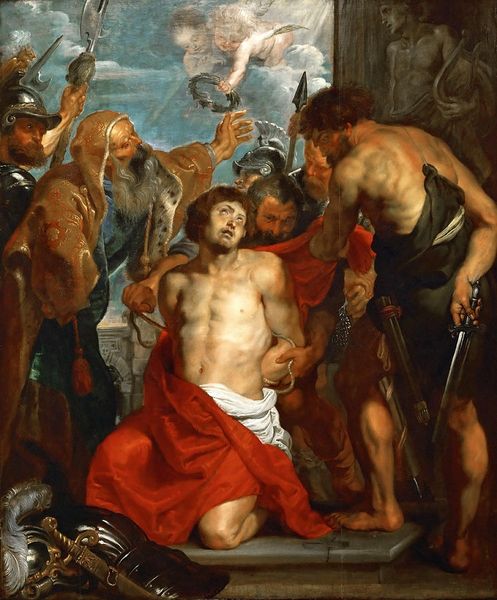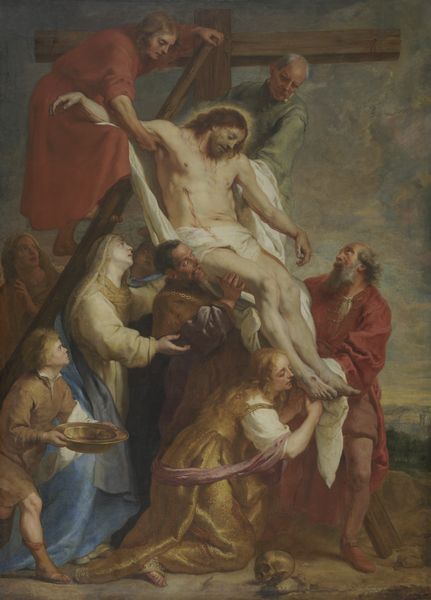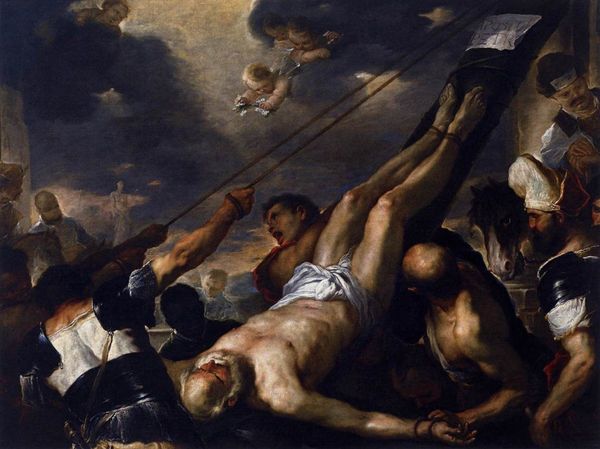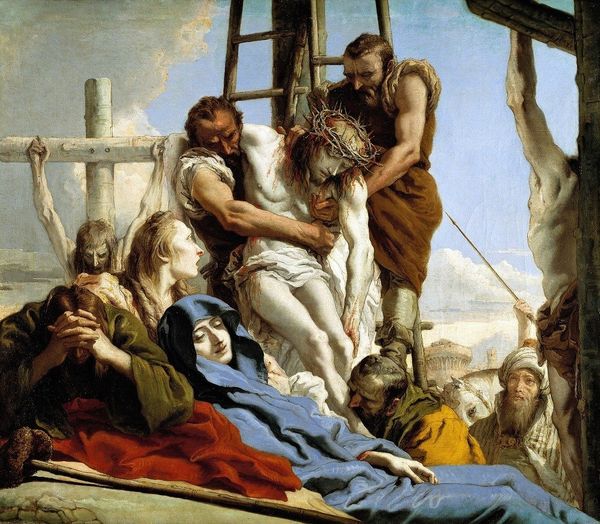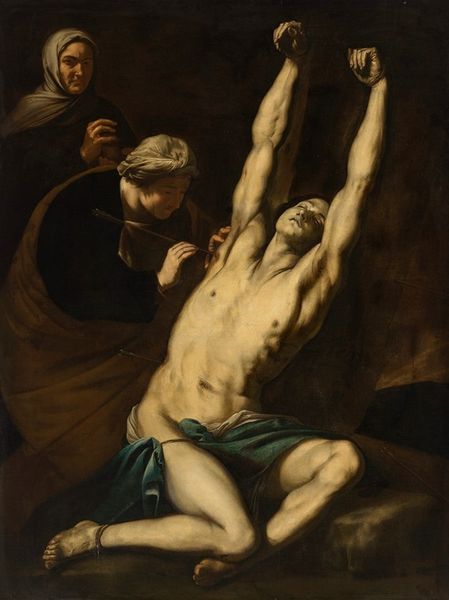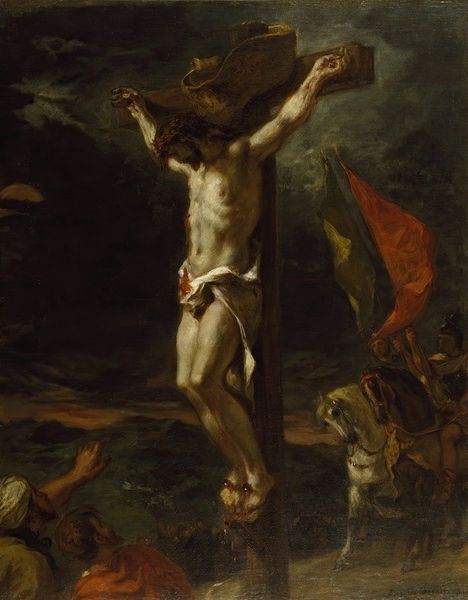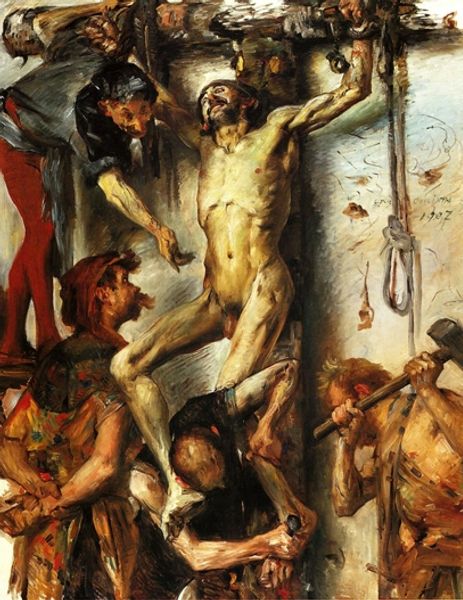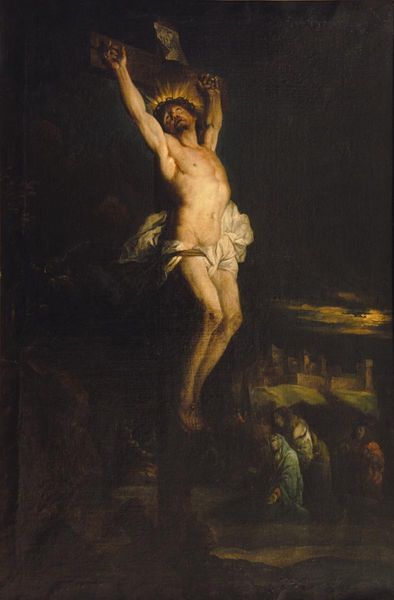
painting, oil-paint
#
baroque
#
painting
#
oil-paint
#
figuration
#
oil painting
#
christianity
#
men
#
history-painting
Dimensions: 234 x 234 cm
Copyright: Public domain
Jusepe de Ribera painted 'The Martyrdom of St. Philip' in oil on canvas, though the exact date remains unknown. The scene presents Saint Philip's execution, a spectacle of suffering that invites us to consider its place in the cultural and institutional history of 17th-century Spain. Ribera, an important figure in the Spanish Baroque movement, captures a raw, unflinching realism in this work. The visual codes speak to the period’s religious fervor and the power of the Church, where martyrdom was a potent symbol. The painting likely reflects the Counter-Reformation's emphasis on suffering and the saints. Ribera’s naturalistic style, influenced by Caravaggio, would have resonated in a society where the visual arts served both religious and propagandistic purposes. To fully understand this work, we might turn to the archives of religious orders, Inquisition records, and the biographies of saints. We could consider also the patronage networks that sustained artists like Ribera. Art, as this painting reminds us, is always contingent on its social and institutional context.
Comments
No comments
Be the first to comment and join the conversation on the ultimate creative platform.

